Tapping into Technology to Improve Health Care Research
The new UArizona Health Sciences Sensor Lab is expanding health care research by providing access to wearable sensors and advanced digital technologies.
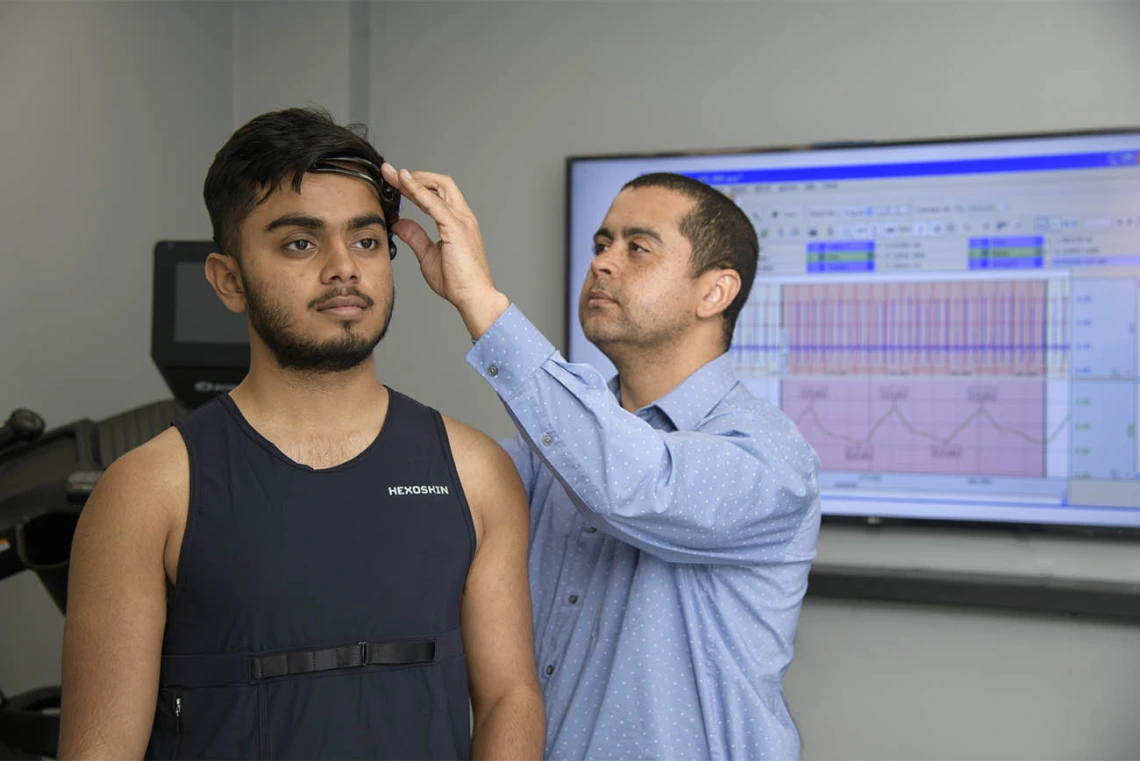
The Sensor Lab connects researchers across disciplines to tap into technological and digital solutions to health care issues using artificial intelligence, virtual reality, mobile applications and more.
Every second of every day, someone age 65 or older suffers a fall, and 1 in 5 of those causes damage, such as a broken bone or head injury. According to the Centers for Disease Control and Prevention, more than 32,000 people a year die from injuries sustained during a fall.
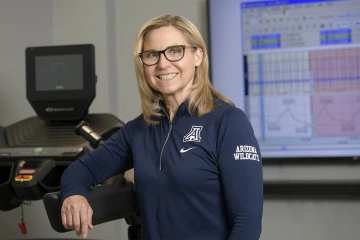
Jennifer Barton, PhD, leads the Sensor Lab strategic initiative. She says the Sensor Lab came about because there was a need across the university to harness great advances in sensor technology.
“We are finally getting to the point where we can come up with devices that are worn on the body that are safe and are very comfortable,” said Dr. Barton, a professor of biomedical engineering who leads the University of Arizona Health Sciences Sensor Lab. “In research, this becomes significant because technology enables us to collect high-quality data in an unobtrusive way. This data can be used to assess basic overall health as well as social, emotional and mental well-being.”
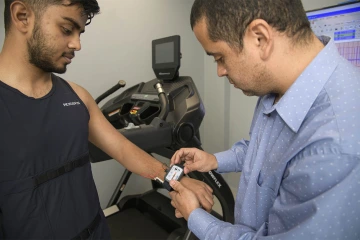
Gustavo de Oliveira Almeida, PhD, coordinator of the Sensor Lab, demonstrates how a wireless wrist sensor can be fitted to gather data for research purposes.
Additionally, the Sensor Lab collaborates and shares space with the UArizona Holodeck’s Experiential Supercomputing facility. The Holodeck seamlessly integrates the physical with the virtual to create a unique research environment with unparalleled tools for intellectual and creative output.
“Sensors create a wealth of big data in research,” said Gustavo de Oliveira Almeida, PhD, coordinator in the Sensor Lab. “That massive data gathering can set a research project apart from one that is not using sensors.”
Meeting the needs of researchers
The Sensor Lab was established with two primary goals. The first is to improve human health, well-being and experience through the application of sensor technology in research. The lab has a pool of shared sensors and associated equipment for research, and employees provide comprehensive support related to the use of the sensor technology and data.
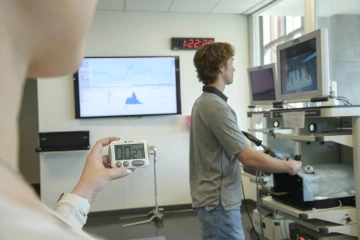
Student researchers measured how stress affected the learning and retention of surgical skills by placing a heart rate monitor on participants, then adding a time limit on the simulation training exercises as a stressor.
“There was a real need for this resource not only at Health Sciences, but really across the entire University of Arizona campus,” Dr. Almeida said. “We have a space that brings interdisciplinary investigators together, and we are going to be able to put state-of-the-art technology in more people's hands.”
The Sensor Lab is connecting with researchers across campus in several ways, including supporting projects through seed grants. Ten research proposals, including two for student research, recently were funded in the hopes that the preliminary data gathered through the projects will generate additional external funding.
Philipp Gutruf, PhD, associate professor of biomedical engineering in the UArizona College of Engineering, received both a seed grant to fund his own research as well as a student award to support graduate and undergraduate students in his lab. Dr. Gutruf is testing wearable sensors he designed to facilitate continuous wireless and battery-free operation for frailty detection. The flexible devices independently monitor a person’s motor function during normal physical activity.
Connecting researchers to the right products
Marissa Lovett, a UArizona College of Medicine – Tucson student and research associate in the UArizona Health Sciences Arizona Simulation Technology and Education Center, is part of a team studying the role of stress in surgical skill retention. Lovett hypothesized that stress – in this case, a time limit during training – can be beneficial to improve skill retention in an acute setting.
Lovett and her research partner, Allyson Molzahn, designed a study that separated surgical trainee participants into two groups. One group was taught a skill under a time limitation while the second group had no time constraint. The research team was able to track heart rate stress and psychological stress because of the sensors that they used. Several weeks later, both groups were tested again to see which participants best retained the skills they learned.
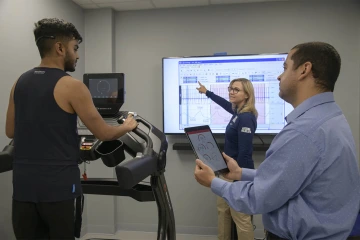
The Sensor Lab features several rooms that can be configured in a variety of ways to suit the needs of each research project. Here, Drs. Barton and Almeida collect data from a study participant as he uses a treadmill.
Lovett and Molzahn used a Polar H10 heart rate monitor acquired from the Sensor Lab to monitor stress and heart rate variability in the study. Lovett credited Dr. Almeida for helping identify the best sensor to use, as well as the programs that would best interpret the data.
“Gustavo was phenomenal in talking to us about different products that were available that can detect heart rate and heart rate variability,” Lovett said. “He also explained to us the different types of data that we could collect, and ultimately he connected us with the products that made this a successful research project.”
Contributing to robust solutions
One of the Sensor Lab’s most advanced collaborations is with Yuanyuan Kay He, PhD, assistant professor in the Fred Fox School of Music at the UArizona College of Fine Arts. Dr. He composed “StellarScape,” a combination of music, dance and cinematography blended with data visualization and astrophysical simulation. The aesthetically focused project yielded applications that will advance research as well.
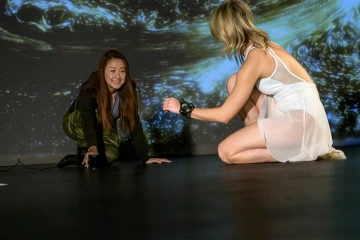
Yuanyuan “Kay” He, PhD, (left) an assistant professor at the UArizona Fred Fox School of Music, collaborated with the Sensor Lab for more than a year to help bring StellarScape to life using wearable sensors fitted to dancers including Hayley Meier (right). "After the first nine months, we looked back and said, ‘Look how elementary we were, and look what we can do now,” Dr. He said.
A wearable wrist sensor tracks the movements of a dancer, which also are captured through a camera mounted to the ceiling. Using data from the sensors in real time, particles that appear to move in sync with the dancer’s motions are displayed on a large video screen behind the dancer.
“StellarScape is a project that really challenged us,” Dr. Almeida said. “We had to push our limits because the speed of a dancer’s movements, their rotation and their stamina are far different than that of someone walking across a room or being on a stationary treadmill. We now have more robust solutions for how to track movements of an elderly person, for instance.”
Dr. Barton said there has been a great need to harness advances in sensor technology for research. With the opening of the Sensor Lab, researchers now have the resources and support needed to address myriad health care issues, from stress to frailty and falls, and to develop sensor-based solutions to improve health and well-being.
Photo Gallery
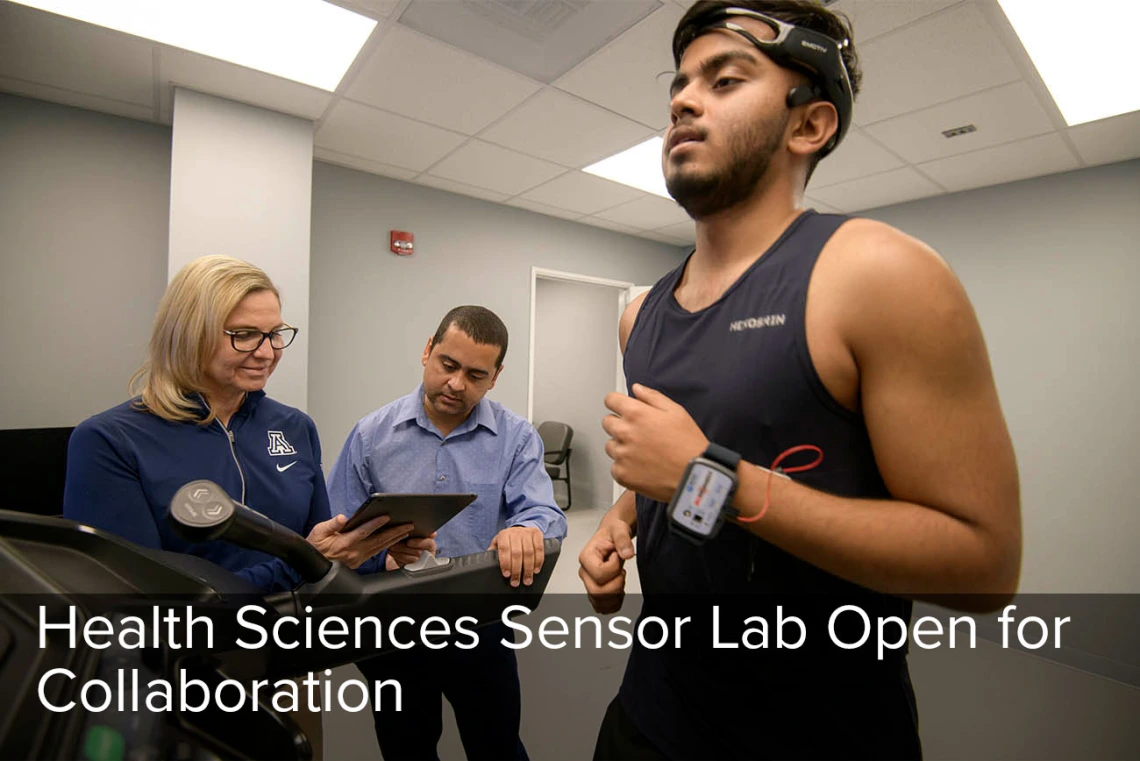
Our Experts
Contact
Blair Willis
520-626-210
bmw23@arizona.edu

